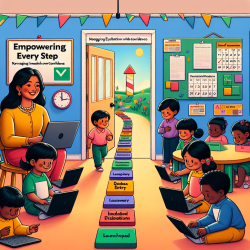Introduction: Navigating the Maze of Special Education Funding
Special education funding agencies often find themselves at a crossroads, grappling with the challenge of providing effective services while managing limited resources. The feeling of being lost in a maze of options and requirements is all too familiar. However, virtual therapy offers a beacon of hope, lighting the way toward more efficient and impactful solutions.
The Rise of Virtual Therapy in Special Education
Virtual therapy, particularly through platforms like TinyEYE, is transforming the landscape of special education. By leveraging telehealth technologies, we can provide consistent, high-quality therapy services to students regardless of their location. This is not just a technological shift; it's a paradigm shift that promises to deliver better outcomes for children in special education programs.
Data-Driven Decisions: The Backbone of Effective Therapy
In the realm of speech-language pathology, data-driven decisions are crucial. They ensure that every therapeutic intervention is backed by solid evidence, maximizing its effectiveness. At TinyEYE, we utilize comprehensive data analytics to track progress, tailor interventions, and demonstrate the tangible benefits of our services. This approach not only enhances the quality of therapy but also provides funding agencies with the evidence they need to justify their investments.
Benefits of Virtual Therapy for Special Education
- Accessibility: Virtual therapy breaks down geographical barriers, ensuring that every child has access to the services they need.
- Consistency: Regular sessions can be maintained without the disruptions often caused by logistical challenges.
- Cost-Effectiveness: By reducing the need for physical infrastructure and travel, virtual therapy offers a more economical solution for schools and funding agencies.
- Personalization: Data-driven insights allow for highly personalized therapy plans that cater to the unique needs of each student.
Inspiring Confidence in Funding Agencies
For special education funding agencies, the decision to invest in virtual therapy should be grounded in evidence and confidence in the outcomes. By choosing a data-driven, telehealth approach, agencies can rest assured that they are supporting a method that is not only effective but also sustainable and scalable. The ability to monitor progress and adjust strategies in real-time ensures that every dollar spent is used efficiently to improve student outcomes.
Conclusion: A New Horizon for Special Education
The integration of virtual therapy into special education is more than just an innovative solution; it is a necessary evolution to meet the growing demands of our educational system. By embracing this change, funding agencies can play a pivotal role in shaping a future where every child has the opportunity to succeed, regardless of their circumstances. Together, we can navigate the complexities of special education funding with confidence and inspiration.










